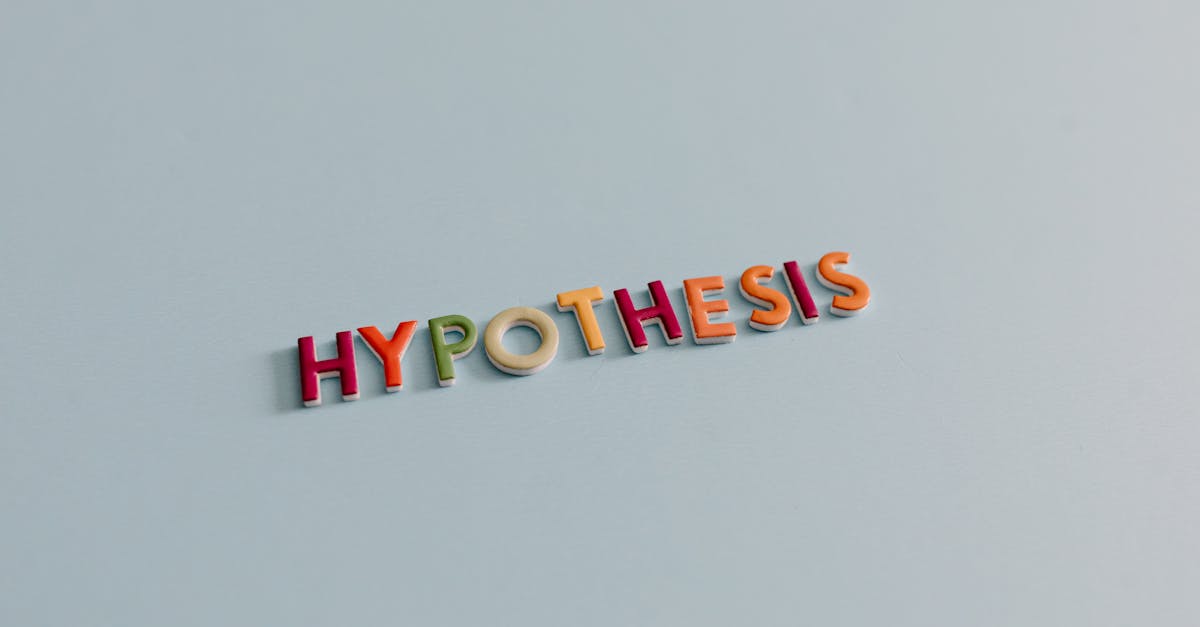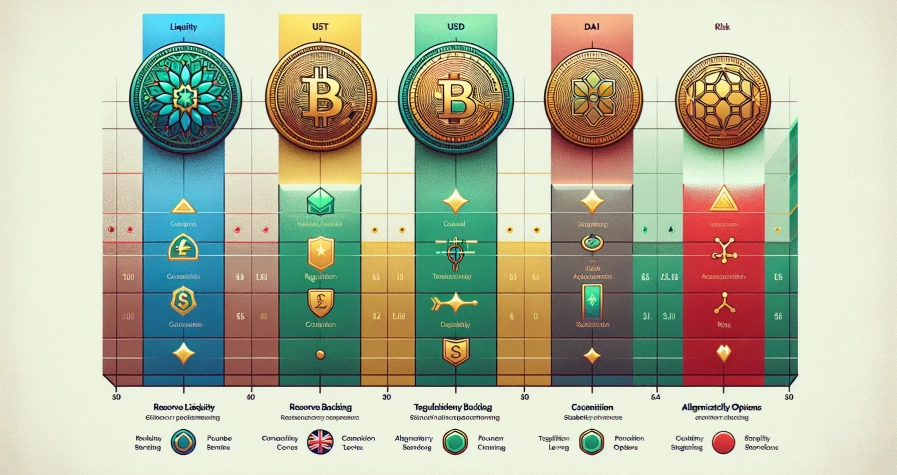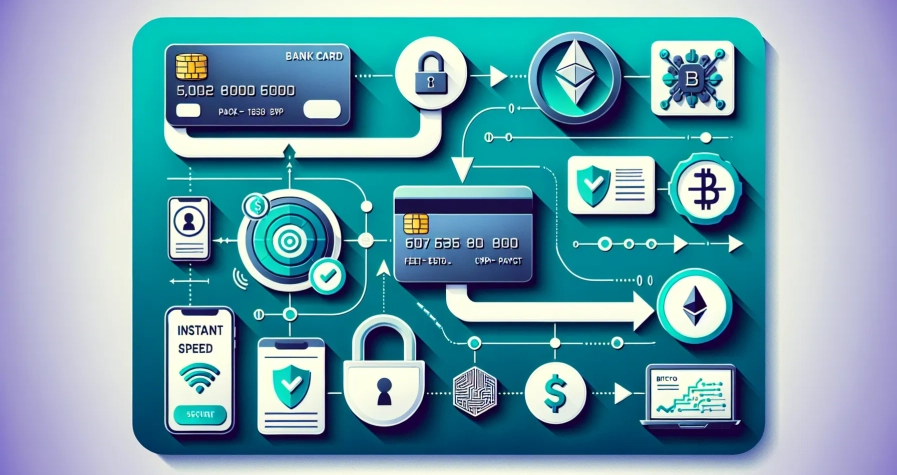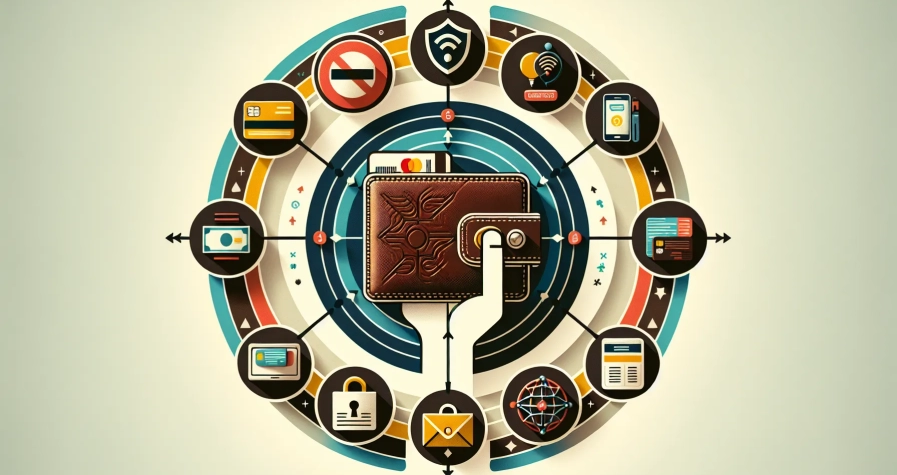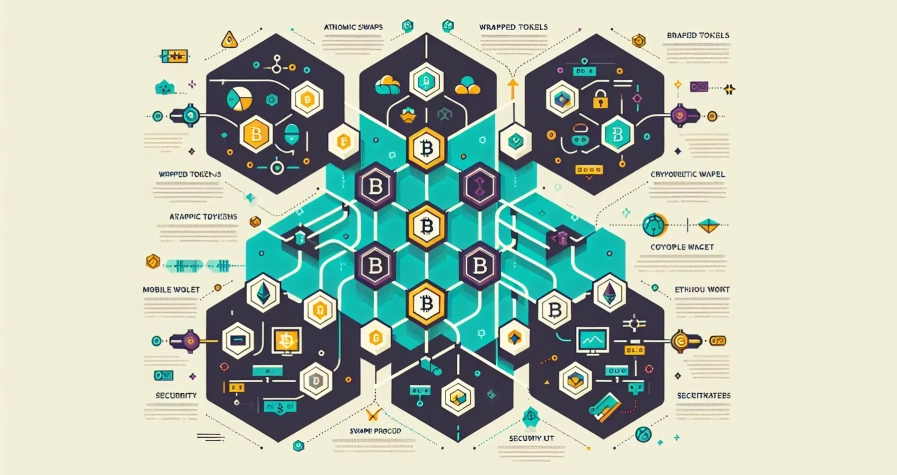Key Takeaways
- zk-SNARKs enable privacy-preserving verification – You can prove you know something (like having sufficient funds or being over 18) without revealing the actual sensitive information, revolutionising how privacy and verification work together in digital systems.
- The technology offers exceptional computational efficiency – Despite complex underlying mathematics, zk-SNARKs produce constant-sized proofs (typically 200-300 bytes) that verify in milliseconds, regardless of the original computation’s complexity.
- Real-world applications span multiple industries – From privacy-focused cryptocurrencies like Zcash to electronic voting systems and identity verification, zk-SNARKs are already transforming how we handle sensitive data across finance, governance, and authentication sectors.
- Significant scalability benefits for blockchain networks – Layer-2 solutions using zk-SNARKs can process thousands of transactions whilst reducing costs by up to 99% and increasing throughput by 100-1000x compared to traditional blockchain verification methods.
- Technical complexity and trusted setup present key challenges – Implementation requires advanced cryptographic expertise, and the initial trusted setup ceremony creates potential security risks if not conducted properly, limiting widespread adoption.
- zk-SNARKs outperform other privacy technologies in specific use cases – Whilst alternatives like zk-STARKs avoid trusted setups, zk-SNARKs provide superior efficiency with smaller proof sizes and faster verification times for applications requiring immediate, non-interactive verification.
You’ve probably heard about zk-SNARKs in cryptocurrency discussions but wondered what all the fuss is about. This cryptographic technology is revolutionising how we handle privacy and verification in the digital world yet remains shrouded in technical jargon that makes it seem impossibly complex.
Zero-Knowledge Succinct Non-Interactive Arguments of Knowledge – that’s what zk-SNARKs stands for and yes it sounds intimidating. But here’s the thing: the concept behind it is actually quite brilliant and surprisingly straightforward once you strip away the technical complexity.
Think of zk-SNARKs as a way to prove you know something without revealing what that something actually is. It’s like proving you’re over 18 without showing your exact birth date or demonstrating you have sufficient funds in your account without disclosing your balance. This technology is already powering privacy-focused cryptocurrencies and could transform everything from voting systems to identity verification.
What Are zk-SNARKs?
zk-SNARKs represent a specific type of zero-knowledge proof that combines mathematical precision with computational efficiency. Zero-Knowledge Succinct Non-Interactive Arguments of Knowledge create a cryptographic framework where you can verify statements without accessing the underlying data that supports those statements.
Zero-Knowledge means you can prove knowledge without revealing the actual information. When you demonstrate that you know a secret password, zk-SNARKs enable this verification without exposing the password itself to the verifying party.
Succinct indicates that the proof remains small regardless of the computation’s complexity. A zk-SNARK proof for verifying a million transactions occupies the same space as one for verifying ten transactions – typically just a few hundred bytes.
Non-Interactive eliminates the back-and-forth communication between prover and verifier. You generate a single proof that anyone can verify independently without requiring multiple rounds of questions and responses.
Arguments of Knowledge establish that the prover genuinely possesses the claimed information rather than making lucky guesses. The mathematical structure ensures that creating false proofs becomes computationally impossible.
The technology operates through three distinct phases: Setup, Proving, and Verification. During setup, the system generates public parameters that both parties use. The proving phase creates the cryptographic proof, whilst verification confirms the proof’s validity using only the public parameters and the proof itself.
| Component | Function | Size Impact |
|---|---|---|
| Setup Phase | Generates public parameters | One-time process |
| Proof Generation | Creates cryptographic evidence | Fixed small size |
| Verification | Confirms proof validity | Constant time |
zk-SNARKs transform complex computations into simple yes-or-no questions. Instead of re-executing entire programmes, verifiers check compact proofs that mathematically guarantee the computation’s correctness whilst preserving complete privacy of the input data.
How Do zk-SNARKs Work?
zk-SNARKs function through a sophisticated mathematical framework that transforms complex computations into verifiable proofs. The system operates by converting your original computation into a mathematical circuit that can be cryptographically verified without revealing the underlying data.
The Three Key Components
Setup Phase: The system generates two cryptographic keys during the initial setup process. The proving key enables you to create proofs for specific computations, while the verification key allows others to verify these proofs. This phase creates a structured reference string that both parties use throughout the protocol. The setup occurs once for each type of computation you want to prove, establishing the mathematical parameters needed for proof generation.
Proving Phase: You transform your private input and computation into a cryptographic proof during this stage. The process converts your data into polynomial equations that represent the original computation mathematically. Your proving key combines with these polynomials to generate a succinct proof that demonstrates you’ve performed the computation correctly. The proof remains constant in size regardless of the complexity of your original computation.
Verification Phase: The verifier uses your proof and the verification key to confirm the computation’s accuracy. This process involves checking mathematical relationships between the proof elements without accessing your private data. The verification completes in milliseconds even for computations that originally took hours to perform. The verifier receives a simple yes-or-no answer about the proof’s validity.
The Verification Process
Mathematical Circuit Construction: Your computation transforms into a mathematical circuit consisting of addition and multiplication gates. Each gate represents a basic operation in your original computation, creating a standardised format for proof generation. The circuit captures every step of your computation whilst maintaining the logical relationships between inputs and outputs.
Polynomial Encoding: The system converts your circuit into polynomial equations that preserve the computation’s structure. These polynomials encode the constraints that any valid computation must satisfy, creating a mathematical representation of your problem. The encoding process ensures that only correct computations can generate valid proofs.
Cryptographic Proof Generation: Your private inputs combine with the polynomial representation to create the final proof. The process uses elliptic curve cryptography to compress the computation into a small proof size, typically around 200 bytes. The proof contains enough information for verification whilst hiding all sensitive data from the verifier.
Verification Computation: The verifier performs a series of mathematical checks on your proof using the verification key. These checks confirm that the proof corresponds to a valid computation without revealing any private information. The verification process requires significantly less computational power than performing the original computation, making it highly efficient for practical applications.
Real-World Applications of zk-SNARKs
The mathematical framework underlying zk-SNARKs translates into practical solutions across diverse industries. You can observe these cryptographic protocols already transforming sectors from digital finance to democratic processes.
Cryptocurrency and Blockchain
Privacy-focused cryptocurrencies like Zcash implement zk-SNARKs to shield transaction details while maintaining blockchain integrity. You can send and receive funds without revealing wallet addresses, transaction amounts, or account balances to external observers.
Ethereum’s scaling solutions utilise zk-SNARKs through rollup technologies, enabling thousands of transactions to be processed off-chain before being verified on the main network. Polygon zkEVM and StarkNet demonstrate how you can achieve transaction throughput increases of 100-1000x whilst reducing gas costs by up to 99%.
Supply chain verification represents another blockchain application where you can prove product authenticity without exposing proprietary manufacturing processes. Companies track goods from origin to consumer whilst protecting sensitive business information through zk-SNARK verification protocols.
Identity Verification
Digital identity systems leverage zk-SNARKs to enable selective disclosure of personal information. You can prove your age exceeds 18 without revealing your exact birth date, or confirm your residency in a specific country without disclosing your complete address.
Financial institutions implement zk-SNARK-based know-your-customer (KYC) processes that verify customer eligibility without storing sensitive personal data. This approach reduces data breach risks whilst maintaining regulatory compliance across jurisdictions.
Educational credential verification allows you to prove your qualifications to employers without sharing complete academic transcripts. Universities and certification bodies can issue zk-SNARK-enabled diplomas that employers verify instantly without accessing private educational records.
Voting Systems
Electronic voting platforms utilise zk-SNARKs to ensure ballot privacy whilst enabling public verification of election results. You can cast votes that remain completely anonymous whilst allowing independent auditors to verify the counting process’s accuracy.
Estonia’s e-Residency programme explores zk-SNARK implementation for secure digital democracy, where citizens prove their voting eligibility without revealing personal details to election observers. This system maintains voter privacy whilst ensuring each person votes only once.
Corporate governance applications enable shareholders to participate in company decisions through zk-SNARK-verified voting. You can prove your shareholding entitlement without disclosing your exact stake size, protecting your investment privacy whilst exercising governance rights.
Benefits of Using zk-SNARKs
zk-SNARKs deliver enhanced privacy protection whilst maintaining full verifiability across digital systems. You can prove statements about your data without exposing the actual information itself, creating a fundamental shift in how privacy and verification work together. Financial institutions utilise this capability to verify customer compliance without accessing sensitive personal details, whilst blockchain networks maintain transaction integrity without revealing transaction amounts or participant identities.
Privacy Enhancement
Privacy becomes absolute when zk-SNARKs encrypt your sensitive information during verification processes. You retain complete control over your data whilst still providing necessary proofs to third parties. Healthcare systems benefit from this privacy layer, allowing patients to verify insurance coverage without disclosing medical histories. Educational institutions can confirm degree authenticity without revealing complete academic records or grades.
Computational Efficiency
Verification processes require minimal computational resources regardless of the original calculation’s complexity. You can verify complex computations in milliseconds rather than hours, making large-scale verification practical. Ethereum’s layer-2 solutions process thousands of transactions using zk-SNARKs whilst consuming 99% less energy than traditional verification methods. This efficiency enables real-time verification in applications previously limited by computational constraints.
Scalability Improvements
Transaction throughput increases dramatically when zk-SNARKs handle verification processes off-chain. You can process thousands of transactions simultaneously whilst maintaining the same security guarantees as on-chain verification. Polygon’s zkEVM processes over 2,000 transactions per second using zk-SNARK technology, compared to Ethereum’s base layer capacity of 15 transactions per second.
| Metric | Traditional Verification | zk-SNARKs |
|---|---|---|
| Proof Size | Variable (large) | Fixed (small) |
| Verification Time | Minutes to hours | Milliseconds |
| Privacy Level | Limited | Complete |
| Computational Cost | High | Low |
| Scalability | Poor | Excellent |
Trust Minimisation
Mathematical guarantees replace institutional trust when zk-SNARKs verify statements cryptographically. You don’t require trusted intermediaries to validate information accuracy, reducing counterparty risk and eliminating single points of failure. Decentralised finance protocols utilise zk-SNARKs to prove collateralisation without revealing portfolio compositions, enabling trustless lending and borrowing.
Regulatory Compliance
Compliance verification becomes seamless whilst maintaining data confidentiality through zk-SNARK implementation. You can demonstrate adherence to regulations without exposing proprietary business information or customer data. Financial services use zk-SNARKs to prove anti-money laundering compliance whilst protecting customer privacy, satisfying both regulatory requirements and data protection laws.
Cost Reduction
Operational costs decrease significantly when zk-SNARKs eliminate redundant verification processes and intermediary fees. You save on compliance costs, audit expenses, and infrastructure maintenance whilst improving verification accuracy. Supply chain companies reduce verification costs by 60-80% when implementing zk-SNARK-based authenticity proofs compared to traditional certification methods.
Limitations and Challenges
zk-SNARKs face significant technical and operational hurdles that limit their widespread adoption. Understanding these constraints helps you evaluate when this technology suits your specific use case.
Technical Complexity
zk-SNARKs require advanced mathematical knowledge spanning cryptography, elliptic curve theory, and polynomial arithmetic. Implementation demands expertise in circuit design, where you must translate computational problems into arithmetic circuits before generating proofs. Programming languages like Circom and Leo provide specialised syntax that differs substantially from traditional development environments.
Circuit optimisation presents ongoing challenges as inefficient designs create larger proof sizes and longer generation times. You’ll encounter debugging difficulties since traditional testing methods don’t apply to zero-knowledge circuits. Constraint systems require careful construction to prevent soundness vulnerabilities where invalid proofs might appear valid.
Mathematical operations within zk-SNARK circuits consume significant computational resources compared to standard algorithms. Field arithmetic operations, pairing computations, and polynomial evaluations create computational bottlenecks that slow proof generation. Development teams often need specialised cryptographic expertise that remains scarce in the current talent market.
Setup Requirements
zk-SNARKs demand a trusted setup ceremony that generates cryptographic parameters for the entire system. This ceremony creates toxic waste—secret random values that must be destroyed after parameter generation. If these secrets survive, attackers could forge proofs and compromise system security entirely.
Parameter generation requires multiple participants to ensure no single entity controls the setup process. Ceremonies involve complex coordination where each participant must verify previous contributions and add their own randomness. The setup becomes invalid if any participant acts maliciously or fails to destroy their secret values properly.
Universal setups like those used in PLONK reduce these risks by creating parameters that work across multiple circuits. However, you still face significant coordination costs and must trust that ceremony participants followed protocols correctly. Setup updates require new ceremonies whenever you modify circuit logic, creating maintenance overhead for evolving applications.
Computational requirements during setup exceed those needed for regular proof generation. Parameter files often reach gigabytes in size, creating storage and distribution challenges for decentralised networks. Verification keys must remain accessible to all verifiers whilst proving keys require secure storage to prevent unauthorised proof generation.
zk-SNARKs vs Other Privacy Technologies
zk-SNARKs distinguish themselves from traditional privacy technologies through their unique combination of mathematical proofs and computational efficiency. Unlike conventional encryption methods that simply hide data, zk-SNARKs enable verification without revealing underlying information. You’ll find three primary categories of privacy technologies competing in the digital landscape: cryptographic protocols, privacy-enhancing techniques, and distributed systems approaches.
Traditional encryption protects data through algorithmic transformation but requires decryption for verification. AES-256 encryption secures data transmission yet demands key sharing between parties for access. RSA encryption enables secure communication but exposes data during verification processes. Homomorphic encryption allows computations on encrypted data but produces significantly larger proof sizes compared to zk-SNARKs.
Zero-knowledge proof variants offer different trade-offs in terms of setup requirements and computational efficiency. zk-STARKs eliminate trusted setup ceremonies but generate proofs 10-100 times larger than zk-SNARKs. Bulletproofs reduce proof sizes for range proofs but require longer verification times as transaction volumes increase. Interactive zero-knowledge proofs provide strong security guarantees but demand multiple communication rounds between parties.
| Technology | Proof Size | Verification Time | Setup Required | Communication Rounds |
|---|---|---|---|---|
| zk-SNARKs | 200-300 bytes | 5-10 milliseconds | Yes (trusted) | 1 |
| zk-STARKs | 10-100 KB | 20-50 milliseconds | No | 1 |
| Bulletproofs | 2-10 KB | Linear with range | No | 1 |
| Interactive ZK | Variable | Multiple rounds | No | 3-7 |
Privacy coins implement different cryptographic approaches to achieve transaction confidentiality. Monero utilises ring signatures and stealth addresses but creates transaction sizes 5-10 times larger than Bitcoin transactions. Dash employs coin mixing through masternodes but requires multiple rounds of mixing for effective privacy. Zcash integrates zk-SNARKs to enable fully shielded transactions with constant proof sizes regardless of transaction complexity.
Secure multi-party computation (MPC) enables collaborative computations without revealing individual inputs but requires continuous communication between participants. MPC protocols achieve privacy through secret sharing and cryptographic techniques but demand significant computational resources for complex calculations. You’ll encounter verification times ranging from seconds to minutes depending on computation complexity and participant numbers.
Differential privacy adds statistical noise to datasets to protect individual privacy whilst maintaining aggregate utility. Database queries receive mathematically calibrated noise to prevent identification of specific records. Healthcare research utilises differential privacy to publish statistical findings without compromising patient confidentiality. However, differential privacy trades accuracy for privacy and cannot provide the absolute verification guarantees that zk-SNARKs deliver.
Trusted execution environments (TEEs) create secure computational spaces within processors but rely on hardware manufacturers for security guarantees. Intel SGX enclaves protect sensitive computations from operating system access but face side-channel attack vulnerabilities. ARM TrustZone provides secure processing areas but requires trust in chip manufacturers and firmware implementations.
Blockchain privacy solutions address transaction confidentiality through various technological approaches. CoinJoin mixing services combine multiple transactions to obscure individual payment trails but require coordination between participants. Confidential transactions hide transaction amounts using Pedersen commitments but increase blockchain storage requirements by 2-3 times. Payment channels enable private transactions off-chain but require locked funds and dispute resolution mechanisms.
zk-SNARKs excel in scenarios requiring immediate verification with minimal computational overhead. Financial institutions processing thousands of transactions daily benefit from zk-SNARKs’ constant verification times and small proof sizes. Regulatory compliance systems utilise zk-SNARKs to demonstrate adherence without exposing sensitive business data. Blockchain scaling solutions leverage zk-SNARKs to process transactions off-chain whilst maintaining security guarantees equivalent to on-chain execution.
The technology’s non-interactive nature eliminates communication complexity present in other privacy solutions. Single-round proof generation enables efficient integration into existing systems without protocol modifications. Verification processes complete independently without requiring coordination between multiple parties or extended communication sessions.
Conclusion
You’re now equipped with a solid understanding of zk-SNARKs and their transformative potential across multiple industries. This powerful cryptographic technology offers you the ability to verify information whilst maintaining complete privacy—a capability that’s becoming increasingly valuable in our data-driven world.
The mathematical elegance behind zk-SNARKs makes them particularly attractive for applications where both efficiency and privacy matter most. Whether you’re involved in blockchain development financial services or identity management systems zk-SNARKs present compelling solutions to modern verification challenges.
As the technology matures you’ll likely see broader adoption despite current implementation complexities. The ongoing development of user-friendly tools and standardised protocols will make zk-SNARKs more accessible to developers and businesses seeking privacy-preserving verification solutions.
Frequently Asked Questions
What are zk-SNARKs in simple terms?
zk-SNARKs (Zero-Knowledge Succinct Non-Interactive Arguments of Knowledge) are cryptographic tools that allow you to prove you know something without revealing what you know. Think of it like proving your age without showing your birth certificate, or confirming you have enough money in your account without displaying your bank balance. They enable private verification in digital systems whilst maintaining complete accuracy.
How do zk-SNARKs work technically?
zk-SNARKs operate through three phases: Setup, Proving, and Verification. The setup generates cryptographic keys, the proving phase transforms private computations into mathematical proofs, and verification confirms the proof’s validity. Complex computations are converted into polynomial equations, creating compact proofs that remain constant in size regardless of the original computation’s complexity, allowing verification to complete in milliseconds.
What are the main applications of zk-SNARKs?
zk-SNARKs are used in privacy-focused cryptocurrencies like Zcash, blockchain scaling solutions, and identity verification systems. They enable secure voting systems, supply chain verification, financial KYC processes, and educational credential verification. The technology allows organisations to prove compliance with regulations without exposing sensitive data, making it valuable across multiple industries requiring privacy and verification.
What are the key benefits of using zk-SNARKs?
zk-SNARKs provide enhanced privacy protection, computational efficiency, and scalability improvements. They enable verification in milliseconds whilst maintaining complete confidentiality of underlying data. The technology reduces costs by eliminating intermediary fees, improves regulatory compliance, and minimises trust requirements through mathematical guarantees. This makes large-scale verification practical whilst preserving sensitive information across various applications.
What challenges do zk-SNARKs face?
zk-SNARKs require advanced mathematical expertise and complex circuit design, making implementation challenging. They need a trusted setup ceremony to generate cryptographic parameters, which introduces security risks if not properly managed. The technology demands significant computational resources during setup and requires careful optimisation to maintain efficiency. Additionally, the learning curve for developers can be steep.
How do zk-SNARKs compare to other privacy technologies?
Unlike traditional encryption that requires decryption for verification, zk-SNARKs allow verification without revealing information. They excel in scenarios requiring immediate verification with minimal computational overhead. Compared to alternatives like homomorphic encryption or secure multi-party computation, zk-SNARKs offer superior proof sizes and verification times, making them ideal for financial institutions and regulatory compliance systems requiring efficient, non-interactive verification.

